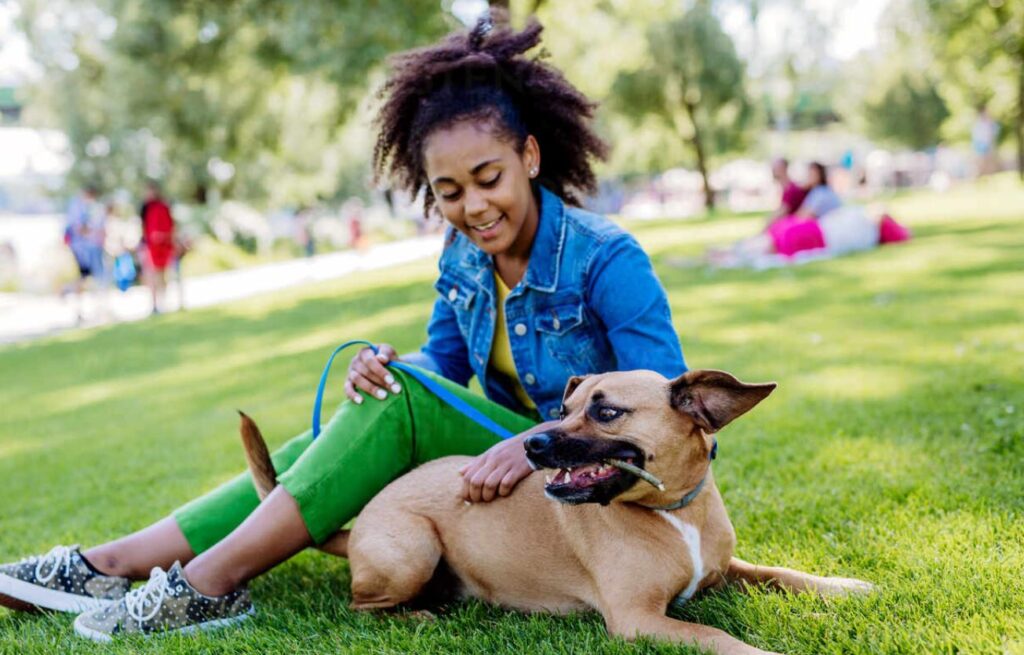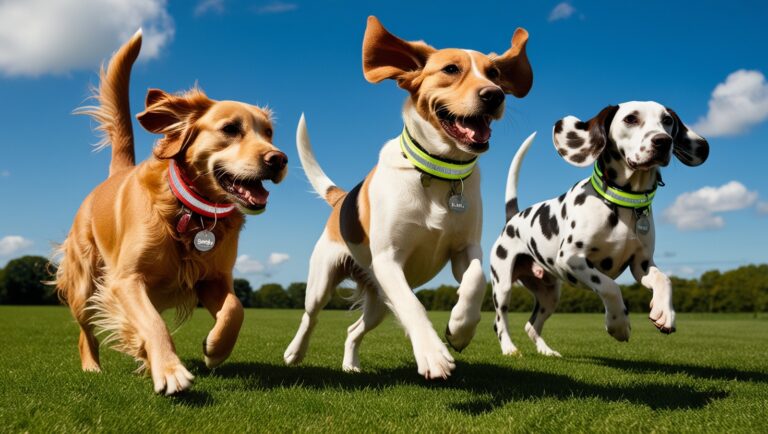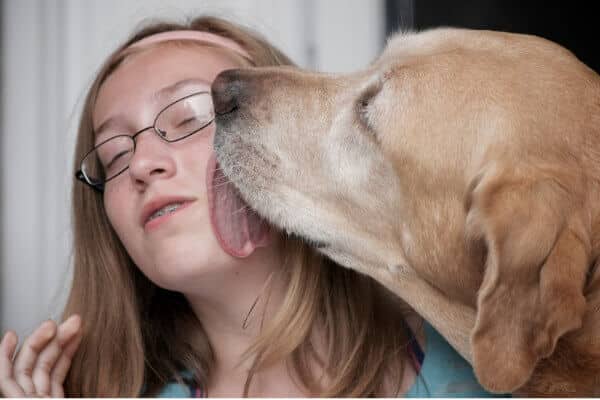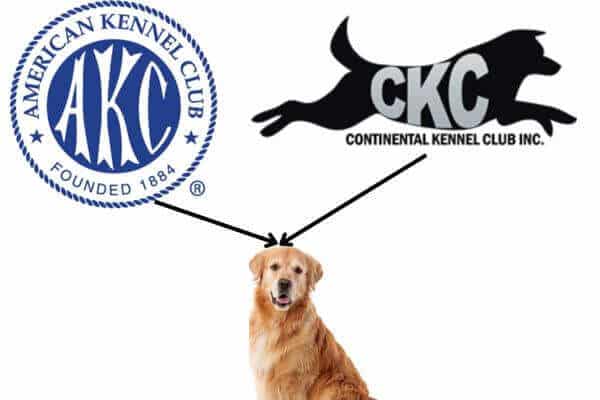How to Train Your Dog for Agility

Your dog is bouncing off the walls and turning your home into a playground, or maybe you’re preparing for a dog agility competition, or perhaps it’s a health issue that requires agility training. Does this sound familiar? Maybe not exactly, but you get the idea. Agility training could be just what you need. We will help you get started and make agility training easy and fun.
Studies show that agility training for dogs can significantly reduce anxiety and improve behavior, with 78% of dogs displaying fewer behavioral issues after training.
Plus, it provides excellent mental stimulation and strengthens the bond between you and your dog.
What is Agility Training for Dogs
Dog agility is all about navigating a fast-paced, timed obstacle course with your dog. Typically, an agility course for dogs features around 15 obstacles, like tunnels, jumps, weave poles, and ramps, all set up in a specific order. These agility exercises for dogs are designed to test and improve both your dog’s physical and mental skills.
So, I will tell you why should you consider dog agility training?
- Great Exercise: Agility is fantastic for burning off energy. With all that running, jumping, climbing, and weaving, your dog will get a serious workout, which is especially beneficial for high-energy breeds.
- Reduces Boredom: Beyond just physical exercise, agility keeps your dog mentally engaged. This mental stimulation helps fend off boredom and the destructive behaviors that can come with it.
- Reinforces Good Behavior: Working through an agility course for dogs requires your dog to pay close attention and follow commands. This can strengthen their obedience and improve their response to training commands.
- Strengthens the Bond: Many handlers find that the teamwork required in agility training enhances the bond with their dog. Training together builds a stronger connection between you and your pup.
If you’re eager to see these benefits in action, give dog agility training for beginners a try. You might be amazed at how quickly both you and your dog adapt and thrive!
What to Know Before You Start Teaching Your Dog Agility

Establish a Base of Basic Obedience
Before starting an agility course for dogs, ensure your dog has solid basic obedience. Commands like “sit,” “stay,” and “come” are crucial. For example, mastering “stay” is essential for obstacles like the teeter board, where your dog must hold her position until the far end touches the ground. A strong command foundation makes agility training smoother and more enjoyable.
Improve Your Dog’s Attention Span
Agility courses are full of distractions – other dogs, loud noises, and tempting obstacles. To keep your dog focused, practice commands like “Watch me” or “Look at me” in different settings. This builds her ability to stay engaged with you despite distractions. A dog with good focus responds better to cues and performs more confidently.
Get Your Dog Used to Different Movements
Introduce your dog to various movements. Have her walk backward, place her paws on objects, climb over, and crawl through things. Teach her to turn tightly around objects and move in different directions by tossing treats. This foundational training makes transitioning to agility obstacles easier and more enjoyable.
Dog Agility Training for Beginners
Dog agility training can be a fantastic activity for many healthy adult dogs, but it’s not always suitable for every dog. If your dog is recovering from an injury or is a senior with health concerns, agility might not be the best fit. I’ve worked with many dogs, and one thing I’ve learned is that agility is best suited for healthy, adult dogs.
For puppies, it’s best to ease into it, waiting until they’re about 12-18 months old before tackling a full agility course for dogs. Additionally, dogs with joint issues or those prone to back problems, like Dachshunds and Basset Hounds, might need modifications or to skip certain obstacles.
Dog agility training is especially beneficial for dogs with behavioral issues:
- Nervous or Anxious Dogs: If your dog tends to get stressed or anxious with uncertainty, agility can be very helpful. Much like regular routines, agility exercises provide structure and repetitive patterns, which can soothe anxious dogs and help them feel more secure.
- High-Energy Working Dogs: For those energetic breeds that need a lot of stimulation, agility offers both physical and mental challenges. This can be an excellent way to help your dog burn off excess energy and stay engaged.
- Dogs That Lack Focus: If your dog struggles with attention or gets easily distracted, agility exercises for dogs can be a perfect outlet. The focus required to navigate obstacles can help channel their energy and improve their concentration.
Home Agility Training for Dogs
You don’t need pricey gear or a big yard to get started with agility training for dogs. With a bit of creativity and some household items, you can set up a range of inexpensive agility equipment right in your backyard or even your living room. This approach to home agility training for dogs offers a flexible and convenient way to teach your dog the basics of agility.
1. Jumps
Before setting up jumps, check with your vet to make sure it’s safe for your dog. Breeds like Dachshunds or Basset Hounds might have back issues, so jumping may not be suitable. If you get the green light, use a piece of plywood on a few books to make a jump.
Start low and gradually increase the height. For large breeds, begin with one to two inches off the ground; for smaller breeds, keep it on the ground initially.
2. Tire Jump
An old bike tire or hula hoop can serve as a great tire jump. Make sure it’s big enough for your dog to pass through comfortably. Start by holding the tire steady while your dog walks through it. As your dog gets used to it, you can raise the tire and eventually hang it from a tree branch.
3. Dog Walk Agility
For dog walk agility, use a picnic bench with wooden ramps at each end. Some dogs might hesitate, so start with the end section first. Place your dog a short distance from the obstacle and encourage them to walk onto it. Gradually build up their confidence until they can navigate the entire obstacle.
4. Tunnel
A children’s plastic tunnel from a store or a DIY version made from sheets draped over chairs works well. If your dog is hesitant about the tunnel, use treats or call them through to encourage them. Don’t force it; make it a fun experience.
5. Weave Poles
Weave poles are often made of 10 to 15 vertical poles that your dog must weave through. Use ski poles or PVC pipes pushed into the ground.
Start with the poles spaced far apart and walk through them with your dog on a leash. Gradually move the poles closer as your dog learns the weaving motion. Go slow to avoid injury and ensure your dog is comfortable.
6. Teeter Board
The teeter board can be tricky, as it involves moving objects. Begin with low-moving items like a skateboard or wobble board. Reward your dog for showing interest and for placing a paw on the object. Gradually build up to a teeter board made from a long piece of wood on a pipe. Progress slowly, using treats and praise to encourage your dog as they adjust to the movement.
7. Shape Up Dog Agility
Getting both you and your dog physically prepared is key. Engaging in shape up dog agility activities, which combine agility exercises for dogs with regular fitness routines, can enhance agility, balance, and overall fitness. This ensures that you and your dog are both ready to tackle the agility course with confidence.
Where to Find an Agility Class

If your dog enjoys agility, enrolling them in a class can enhance their skills. Agility training for dogs is available through various organizations. Start with your local AKC Club, which offers beginner classes and pathways to the Agility Course Test, a great entry-level event.
For additional options, the United States Dog Agility Association (USDAA) offers a directory of agility groups nationwide. This resource can help you find nearby classes and events, helping you and your dog advance in dog agility training.
Summary of Dog Agility Training
Dog agility presents a thrilling challenge for you and your dog. These fast-paced courses not only offer fun but also help you teach obedience, improve your dog’s attention span, and manage behavioral issues like anxiety by providing an outlet and burning excess energy.
Start with basic agility at home by creating simple obstacles like jumps, tunnels, and teeter boards. If you and your dog enjoy it, join a structured class to further develop your skills.
Our next article is on German Shepherd Golden Retriever Mix
Read related posts about





